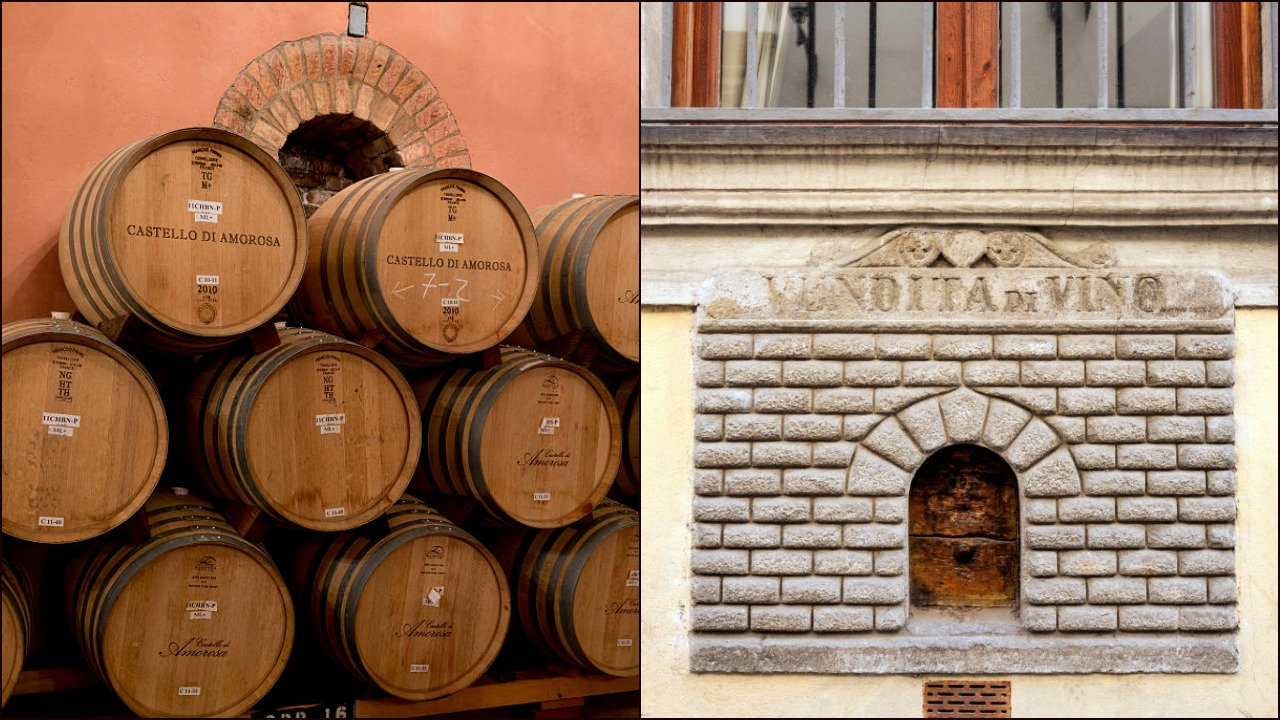Italy's "Wine Windows" Are Flourishing Amid The Pandemic
In Florence, Italy, the pandemic has brought the city's Renaissance-era buchette del vino ("wine windows," in inglese) back to life after centuries of languishing in obscurity. For hundreds of years, thirsty Florentines would bring their empty bottles to these windows, pass them through with a few florin, and in a few minutes their bottles were returned filled with wine. It's a system that is perfect for plague times, but these windows were not actually built for the express purpose of getting shitfaced. Instead, their existence likely traces back to the oldest story in the book: rich people who hate paying taxes and will do everything in their power to avoid them.
In the 15th century, Italy was a loose collection of duchies, kingdoms, and city-states. Two of those city-states, Florence and Milan, had a long history of fighting over territory and generally despising each other. Three wars were fought between them (between 1390 and 1402), which financially devastated Florence; in 1424 war broke out again, but this time the violence continued for 31 years. Florence was forced to rely on paid mercenaries to fight on its behalf, and the costs skyrocketed. As the war dragged on, the government began to collect taxes up to thirty (yes, thirty) times a year to stay afloat. Middle- and low-upper class landowners went bankrupt, businesses folded, and all the money was thrown straight into a war that would go on for decades.
This financial crisis would eventually transform Florence into an oligarchy, but that's another story for another non-food site to delve into. We're here to talk about the wine windows, which started appearing at the homes of a few wealthy landowners for the purpose of illegal cash sales. Vineyards were a lucrative investment for the rich and powerful, and barrels of wine would be transported from the vineyard to their homes in the city, where they'd be stored in the cellars and tended by servants. Tiny, waist-high windows with heavy wood shutters were built into the cellar walls facing out into the street, just big enough to hand off a fiasco (the traditional straw-bottomed Tuscan wine bottle now used to create authentic vibes at The Olive Garden) without the need for eye contact.
Eventually the pressures of Florence's extreme taxation began to wane, but cheating on your taxes never goes out of style—thus, the concept of a cash-only wine window gradually started to catch on. By the early 16th century the idea had become so popular that nearly every vineyard-owning Florentine had a wine window in their cellar, and soon the trend began to spread to neighboring towns like Pisa. Eventually the wine windows became as normal as the butcher and baker, and thrived for nearly 300 years, at which point a cultural shift saw Italians gravitating to taverns and public houses. Many of the wine windows have been bricked up, painted over, and vandalized in the years they languished in obscurity—just another relic in a city with an abundance of historical quirks.
Today, in 21st-century Florence, the buchette del vino is waking up from its long slumber. Insider has shared photos of the fortunate restaurants and bars that now occupy these Renaissance-era buildings and have opened up their wine windows to serve food and drinks in a socially distanced way. And it's not only wine passing through these windows: near the famed Duomo and Uffizi Gallery, ice cream parlor Vivoli uses its window to sell gelato and coffee.
Now that the buchette del vino has returned, will it once again disappear when the pandemic subsides, or will it stick around for the next few centuries? Considering how cute they look on Instagram, it's a good bet we'll be seeing them for quite some time.
